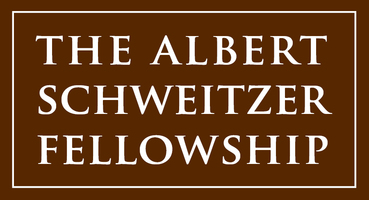By: Javacia Harris Bowser
As students at Auburn University’s Harrison School of Pharmacy, Briley Graves and Lila Parrish are hyper aware of the challenges that some populations face when trying to get the health care that they need.
“Just about every time that we’ve talked about medications, you have to consider barriers that patients have to getting them,” Briley says.
For Briley and Lila, to be good pharmacists they need not only to be aware of barriers to medication access, but they also need to do something about the issues. That’s exactly what they’re striving to do as Albert Schweitzer Fellows. For their project, Briley and Lila are addressing barriers to medication access for patients of Mobile, Alabama at the Stanton Road Clinic.
First, they crafted a screening tool based on social determinants of health. This screener will help them determine what’s keeping each patient from taking their medication as directed. Can they not afford their medication? Do they not have reliable transportation to their pharmacy? Are they having trouble reading or understanding information about their medication?
After identifying the challenges patients are facing, Briley and Lila help connect patients to resources that could help eliminate those barriers. These resources include Mobile’s charitable pharmacy and the State Health Insurance Program (SHIP), as well as help with transportation.
“We’re not naive to the fact that there are tons of resources that we obviously aren’t going to be experts about within our one year of the fellowship,” Briley says. So she and Lila also connect patients to social workers and community health workers who can help patients with issues related to Medicaid and more.
Briley and Lila are also educating patients on methods to help them remember to take their medications and ways to limit their trips to the pharmacy by either having all medicines refilled at the same time or getting their medications delivered.
Hands-On Learning
The project is proving to be an educational opportunity for Briley and Lila too.
“We did all the background research, we’ve done all of the legwork in finding these resources available in the community, making those connections, networking,” Lila says. “Then being able to implement that into this population — I think this is the most hands-on learning we could have possibly had.”
To help build relationships with the patients they’re striving to serve, Briley and Lila participated in community events hosted by the clinic. They also worked to learn as much as they could about community resources.
“I went in those places and got that information directly and had those facilities walk me through as if I were a patient,” Lila says. “That way, when I go into a patient room, I can answer those questions from beginning to end. This is what it will look like if you go to the charitable pharmacy and apply. These are the steps you’re going to have to take. And I think that patients really appreciate that we are very familiar with what we’re offering them.”
In addition to the lessons learned in the classroom at Auburn’s pharmacy school, Briley and Lila were also inspired to take on this project by the work they’ve done at the University of South Alabama’s student-run free clinic that’s based out of the Salvation Army. Since their first year of pharmacy school, Briley and Lila have been serving uninsured populations through this clinic.
“Coming into this project, we saw it as an opportunity to be able to take what we’ve gained from school, the experiences that we’ve seen with an underserved population in Mobile and then apply it at a clinic where we already knew that patients had a higher chance of having barriers to medication just based off of their social determinants of health and socio economic status of that area,” Briley says.
For Lila, the project feels personal.
“I come from this background,” says Lila, who grew up in an underserved community in Valdosta, Georgia. “So to me this really hits home, being able to advocate for people who grew up like I did.”
Going Forward
Currently, Briley and Lila are working on developing a method for following up with patients and assessing impact. They want to make sure patients are using the resources they’ve been referred to and that the resources are making a difference in both tangible and intangible ways.
“We want to see, do they feel more valued by the clinic because we’ve given the survey,” Briley says.
If the screening tool and referral process prove successful, Briley and Lila hope they will continue to be used long after their project is done.
“Once we’ve finished gathering data and we present, we hope that the screener can not only be implemented continuously in this clinic, but in other USA Health System facilities,” Lila says. ”That’s the goal, that’s the plan, the vision.”
Briley and Lila also believe the project will help them with their visions for their own lives.
“I feel like I can definitely take the skills and the setbacks and the challenges and the opportunities that I am gaining from this and apply that going forward,” says Lila who hopes to work one-on-one with patients in ambulatory care in an underserved community.
Briley also hopes to work with underserved communities and plans to pursue a career in pharmacy education.
“Coming into this, one of my personal goals was to grow in my confidence to be able to provide for this patient population and recognize their needs,” she says. “Having gone through all those steps, I definitely have the confidence and I have the passion to carry that forward in the future.”


